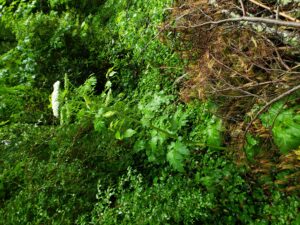Pest Alert – Six Lookalike Plants to Avoid
go.ncsu.edu/readext?814355
en Español / em Português
El inglés es el idioma de control de esta página. En la medida en que haya algún conflicto entre la traducción al inglés y la traducción, el inglés prevalece.
Al hacer clic en el enlace de traducción se activa un servicio de traducción gratuito para convertir la página al español. Al igual que con cualquier traducción por Internet, la conversión no es sensible al contexto y puede que no traduzca el texto en su significado original. NC State Extension no garantiza la exactitud del texto traducido. Por favor, tenga en cuenta que algunas aplicaciones y/o servicios pueden no funcionar como se espera cuando se traducen.
Português
Inglês é o idioma de controle desta página. Na medida que haja algum conflito entre o texto original em Inglês e a tradução, o Inglês prevalece.
Ao clicar no link de tradução, um serviço gratuito de tradução será ativado para converter a página para o Português. Como em qualquer tradução pela internet, a conversão não é sensivel ao contexto e pode não ocorrer a tradução para o significado orginal. O serviço de Extensão da Carolina do Norte (NC State Extension) não garante a exatidão do texto traduzido. Por favor, observe que algumas funções ou serviços podem não funcionar como esperado após a tradução.
English
English is the controlling language of this page. To the extent there is any conflict between the English text and the translation, English controls.
Clicking on the translation link activates a free translation service to convert the page to Spanish. As with any Internet translation, the conversion is not context-sensitive and may not translate the text to its original meaning. NC State Extension does not guarantee the accuracy of the translated text. Please note that some applications and/or services may not function as expected when translated.
Collapse ▲The US Fish and Wildlife Service has created a webpage warning, “Don’t touch these plants! Six lookalikes you want to avoid.”

Cow parsnip is native to North Carolina. Contact with cow parsnip may cause skin irritation, blistering rashes, and skin discoloration. This plant can measure four to ten feet tall and has stems that are fuzzy and grooved.
According to the experts at Fish and Wildlife, “It can be difficult to determine whether you’re looking at hogweed, hemlock or parsnip, but all of these plants have several things in common. Contact (with these plants) may cause unpleasant, potentially deadly, reactions.” Get familiar with these species to stay safe!
Learn about these six toxic plants: Plants to Avoid. Although plant identification apps are useful, do not rely on their findings when identifying toxic plants. Be sure to stay away from any plant you think might be toxic.




